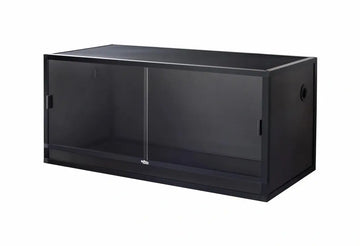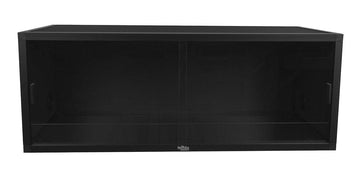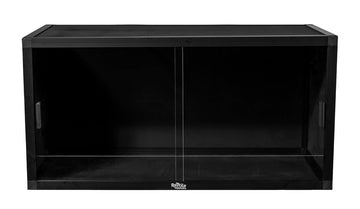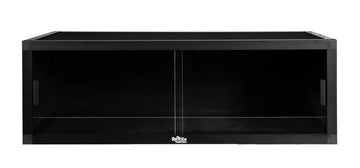The Chinese water dragon is a popular choice for a pet within the reptile community. Still, their advanced care level makes them not as popular for beginners, who favor something easier like the bearded dragon, yet they are still a rewarding and entertaining animal. As omnivorous reptiles, their primary diet is protein in the form of insects, and small prey animals, a small portion of their diet are also fruits and vegetables, which makes up only ten to fifteen percent of their overall menu. All the aspects of their diet will be covered in this article.
With any animal that you choose to take on as a pet, you have a responsibility to select the correct feeders that will enable them to grow, be happy, healthy, and have a long life. Many aspects need to be considered when selecting the variety of feeders on offer for your pet water dragon. Sufficient protein and calcium must be given, as well as a balanced range of other vitamins and minerals; as an animal that's in captivity, water dragons are known to pretty much eat whatever you will put in front of them. Water dragons are known to get tired of the same food always. Offering them the same feeders for weeks on end can cause them to become bored, and they will lose their appetite. Changing up their diet, so they have a choice, it is vital to keep them interested in eating.
We will be covering the various options available that will help keep your Chinese Water Dragon excited. A limited part of their diet can consist of small prey items, as previously mentioned; these usually take the form of pinkie mice, but they should not be given to your pet as a regular staple but more as a rare treat. They are high in fat but a good source of protein and calcium, yet due to their size and consistency, they can be hard for your Chinese Water Dragon to digest. Read on for more information on what you should feed your Chinese Water Dragon.
What Insects Should A Chinese Water Dragon Eat?
Chinese Water Dragons need a diverse range of feeders on offer; the majority of their menu consists of insects, but what insects should you be feeding your pet? Below is a comprehensive list of insects that can be offered to your Chinese Water Dragon.
Staples (daily feeders):
- Dubia Roaches
- Hornworms
- Black Soldier Fly Larvae (Nutrigrubs)
- Butterworms
- Crickets
- Silkworms
- Other Roaches (Discoid, Turkestan, orange head)
- Earthworm
Treats (1-2 times per week):
- Superworms (high in fat)
- Mealworms (hard chitin which makes them difficult to digest
- King worms
- Waxworms (very high in fat)
Every meal, regardless of the age of your Water Dragon, should consist of at least three to four different feeder insects.
You should never feed wild-caught insects to your pet; these can be contaminated with pesticides, or carry parasites and diseases that will harm your dragon. Always source your feeder insects from a reputable supplier.
Small Game, Mice, and Fish
Chinese water dragons are able to consume small prey items like pinkie mice, you may hear of "feeder lizards" being advocated as an optional feeder, but this isn't a necessary part of their diet and is up to you if you wish to incorporate them. Pinkie mice need to be newborn because they have yet to grow any bones or hair that your pet will find difficult to digest, you can purchase these from feeder insect suppliers and pet stores frozen., but you don't need to feed them other lizards. Pinkie mice can be a great source of protein and calcium, particularly if your pet is sick and needs a boost, but in general, it should not be fed more than once every one or two weeks.
Another optional feeder for your water dragon are snails and mollusks, they can even eat crustaceans such as crab meat and small feeder fish, but there is not much information on how much of these they actually need in their diet since they do not consume them in the wild, but generally, these can be fed like pinkie mice as in once every one or two weeks but be careful when doing so as these can contain parasites.
What Vegetables Does A Chinese Water Dragon Eat
Fruits and vegetables do need to be offered to your Chinese Water Dragon, although some seem to be able to live without eating them, it is still essential to provide them with to to your pet. However, it should only make up around ten to fifteen percent of their diet. You should always ensure that you gut-load your feeder insects with vegetables that you would feed your water dragon. Alternatively, you can gut-load them with pre-prepared commercial products made for this purpose; you can buy these here.
Staples 10% of diet):
- Basil
- Bok choy
- Butternut Squash
- Chicory
- Collard greens
- Coriander
- Dandelion flowers and greens
- Endive
- Escarole
- Fresh alfalfa (not dried)
- Hibiscus (Flowers)
- Hibiscus (Leaves)
- Mint
- Mustard greens
- Nasturtium
- Peppermint
- Prickly pear
- Rosemary
- Spaghetti squash
- Turnip greens
Occasional (5% of diet):
- Acorn Squash
- Bell Peppers
- Scallop, Hubbard, Acorn squash
- Watercress
- Rocket
- Pumpkin
- Bell peppers
- Chickpeas, pinto, or green beans (canned in water or fresh)
How Often Should Water Dragons Eat?
The age of your Chinese water dragon determines how much they need to eat every feeding. Baby dragons need feeding daily, and their food must be cut up into small pieces, the size of their feeder insects also needs to be small sizes, to enable them to be able to eat and digest. As they age and reach the juvenile stage, they still need to be provided food daily, but the side of their fruit and veggies needs to be bigger, and they can be fed medium insects. When they reach the adult stage, they only need to be fed every two days but can have their fruits and veggies cut up into larger chunks and can now be offered large insects and the occasional small prey item. Water must be provided in a bowl in their tank for hydration at all times and must be cleaned and replaced daily, but sometimes they will not drink out of a container and can be offered water with a dropper or spray bottle.
Supplementation
One of the other most important aspects of their diet are supplements. They need three different types; a calcium powder supplement, calcium powder with D3, and a multivitamin powder. These need to be rotated, but only need one of their meals dusted per day, with one of the different supplements. Babies and juveniles need three dustings a week of just calcium powder, two dustings a week of the calcium powder plus D3, and one dusting per week of the multivitamin powder, then one day with no supplements at all. At adults stage, they only need one dusting of the calcium powder per week, then one dusting of the calcium plus D3 powder per week and one dusting of the multivitamin powder per week. You don't want to dust their feeders too heavily, just a light pinch will do, or your risk over-supplementation. You can buy the supplements here.











